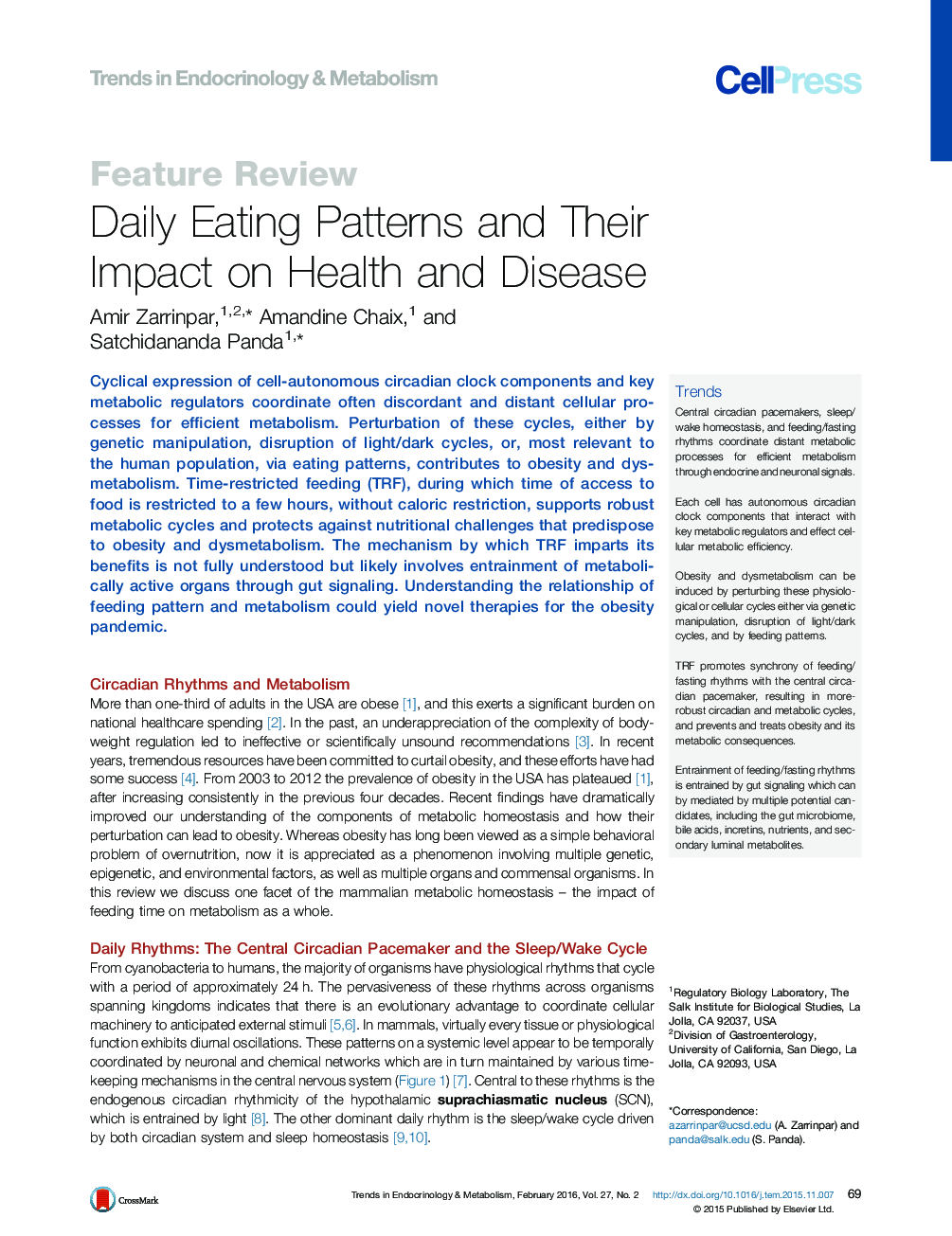| Article ID | Journal | Published Year | Pages | File Type |
|---|---|---|---|---|
| 2810104 | Trends in Endocrinology & Metabolism | 2016 | 15 Pages |
Cyclical expression of cell-autonomous circadian clock components and key metabolic regulators coordinate often discordant and distant cellular processes for efficient metabolism. Perturbation of these cycles, either by genetic manipulation, disruption of light/dark cycles, or, most relevant to the human population, via eating patterns, contributes to obesity and dysmetabolism. Time-restricted feeding (TRF), during which time of access to food is restricted to a few hours, without caloric restriction, supports robust metabolic cycles and protects against nutritional challenges that predispose to obesity and dysmetabolism. The mechanism by which TRF imparts its benefits is not fully understood but likely involves entrainment of metabolically active organs through gut signaling. Understanding the relationship of feeding pattern and metabolism could yield novel therapies for the obesity pandemic.
TrendsCentral circadian pacemakers, sleep/wake homeostasis, and feeding/fasting rhythms coordinate distant metabolic processes for efficient metabolism through endocrine and neuronal signals.Each cell has autonomous circadian clock components that interact with key metabolic regulators and effect cellular metabolic efficiency.Obesity and dysmetabolism can be induced by perturbing these physiological or cellular cycles either via genetic manipulation, disruption of light/dark cycles, and by feeding patterns.TRF promotes synchrony of feeding/fasting rhythms with the central circadian pacemaker, resulting in more-robust circadian and metabolic cycles, and prevents and treats obesity and its metabolic consequences.Entrainment of feeding/fasting rhythms is entrained by gut signaling which can by mediated by multiple potential candidates, including the gut microbiome, bile acids, incretins, nutrients, and secondary luminal metabolites.
